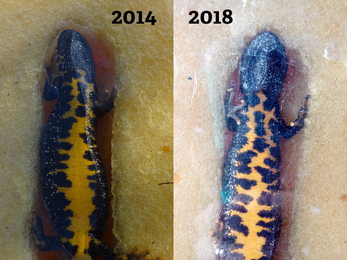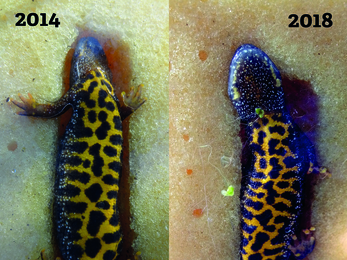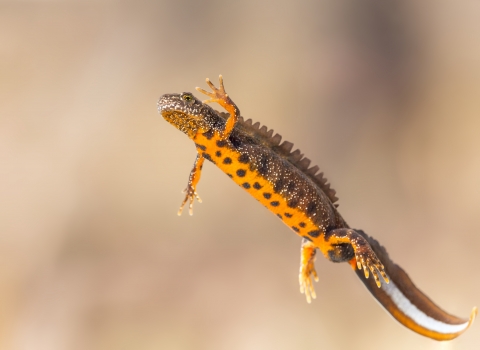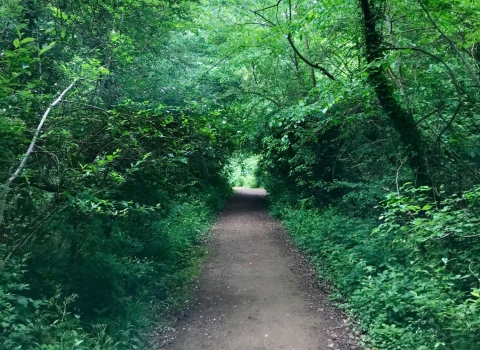Many animals have unique features that enable us to identify individuals. We have fingerprints, zebras have stripes and great crested newts have patterned bellies. This has enabled us to undertake a study into the newts that live in our garden at Cambourne.
We are fortunate that great crested newts are widespread in Cambridgeshire and in places have large healthy populations. However, this is not the case across the whole of the species’ range where intensification of agriculture in the late 20th century caused a loss of suitable breeding ponds and surrounding natural habitat. Consequently, populations have been lost or greatly fragmented and the species and its habitats are legally protected to ensure their future survival.
Our study focusses on the great crested newts that use our garden pond in Cambourne. The pond was created 14 years ago and today is thriving with wildlife – including a seemingly large population of newts. But how many newts can the pond support and how stable is the population? In 2013, I started a programme of capturing the newts and photographing their belly patterns in order to build up a catalogue of individuals. The newts are caught in funnel traps made from plastic bottles, a standard technique and licensed by Natural England. They are then held gently between a sponge and clear plastic whilst a photo is taken and then returned to the pond.





